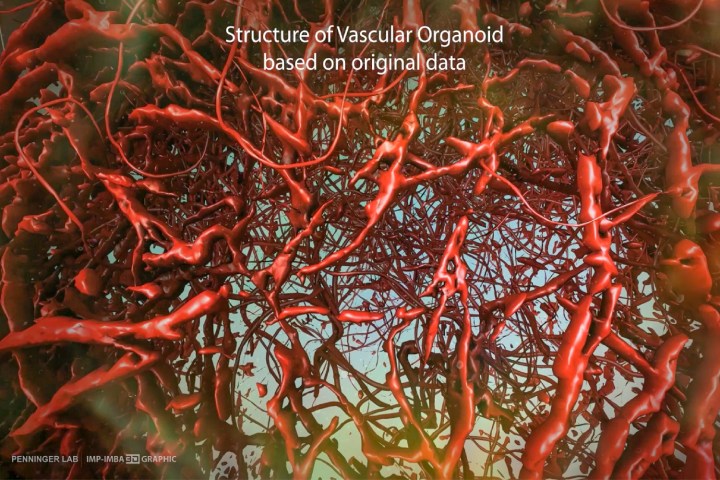
As the thing which links every organ in our bodies together, through the circulatory system, blood vessels are pretty darn important. Now a team of researchers has managed to grow picture-perfect human blood vessels in the lab for the first time, and even to successfully implant them into live mice. The results could be a game-changer for treating diabetes.
“We managed for the first time to grow human blood vessels from stem cells, using advanced bioengineering over many years of trials and error,” Josef Penninger, director of the Life Sciences Institute at the University of British Columbia, told Digital Trends. “The capillary blood vessels look, smell, and taste like human blood vessels: Hence we call them blood vessel organoids. We then used these blood vessel organoids to model prototypic small blood vessel disease in diabetes. We were able to set up a diabetic milieu in a Petri dish that allowed us, for the first time, to model these diabetic blood vessel changes. Most importantly, we also grew a human vascular tree in experimental mice, [resulting in] a mouse with a perfect human blood circulatory system.”
In the process, the researchers demonstrated a key pathway which could potentially prevent changes to blood vessels. These changes not only help trigger diabetes, but are also a major cause of death and morbidity. By being able to make the organoids “diabetic” in a lab setting means having a new model which will make it easier to identify new treatments.
Getting closer to treating any disease is exciting, but diabetes affects a massive number of people — estimated at 420 million people worldwide. However, little has previously been understood about the vascular changes which occur in diabetics.
In addition to finding new treatments for diabetes, Penninger said there are other potential uses for this new breakthrough work.
“I think we could use the blood vessel organoids as transplants to enhance wound healing, giving patients back ‘young blood vessels,’” he said. “From our mouse experiments, we know that we can gain access to the circulatory system and specify, even to arteries and venules, to a real vascular tree. This is not magic like so many other promised stem cell therapies because one can just put them into the wound and dress them up. Surgeons actually came to me [and said that] one could use such transplants to enhance healing in surgeries of bones or cartilage where the healing process is often slow because there are very few blood vessels around.”
A paper describing the work was recently published in the journal Nature.


